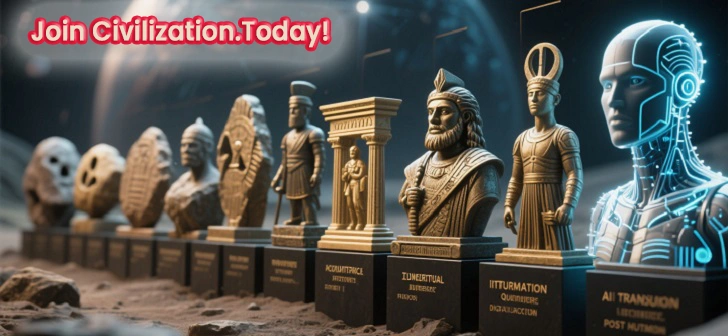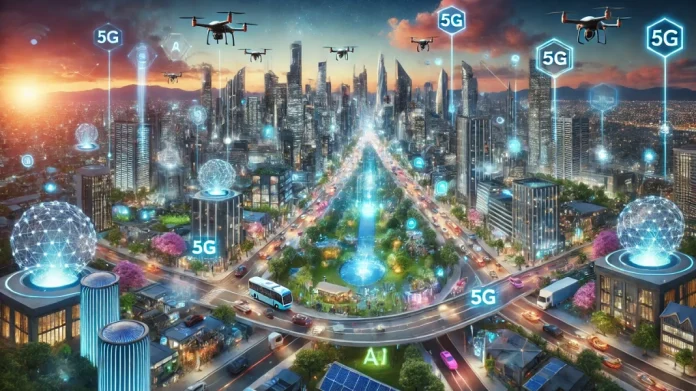In the past two decades, Smart Cities have revolutionized how urban environments operate—optimizing traffic, improving waste management, and enhancing public services through technology. But a new paradigm is emerging that promises to go far beyond simply being “smart.” Welcome to the era of Cognitive Cities—urban ecosystems that don’t just collect and analyze data, but think, learn, and adapt in real time, just like a living brain.
If Smart Cities are the smartphones of urban life, Cognitive Cities are the artificial intelligence-powered supercomputers—constantly evolving, anticipating needs, and shaping the future before it even arrives.
What Are Cognitive Cities?
A Cognitive City is an urban environment where infrastructure, services, governance, and community interactions are powered by advanced artificial intelligence (AI), machine learning, and big data analytics—creating a self-learning ecosystem. Instead of simply responding to commands or data inputs, these cities predict problems before they occur, suggest solutions, and execute them automatically.
Imagine a city that:
- Detects air pollution levels rising and automatically adjusts traffic flows to reduce emissions.
- Predicts crime hotspots before incidents occur and deploys preventive measures.
- Identifies infrastructure wear and dispatches maintenance crews before damage becomes critical.
- Adjusts public transportation schedules dynamically based on real-time commuter demand.
In short, Cognitive Cities think for themselves—optimizing the urban experience in ways that make today’s Smart Cities look outdated.
The Core Technologies Behind Cognitive Cities
Transitioning from Smart Cities to Cognitive Cities requires integrating several advanced technologies that work together seamlessly:
1. Artificial Intelligence & Machine Learning
-
- AI algorithms analyze real-time urban data to forecast events and recommend optimal actions.
- Machine learning enables the city to improve over time based on historical data and feedback loops
2. Internet of Things (IoT)
-
- Billions of sensors embedded in infrastructure, vehicles, and devices continuously feed the AI system with real-time data.
3. Digital Twins
-
- Virtual replicas of the entire city allow AI systems to simulate and test different urban scenarios before implementing changes in the real world.
4. 5G & Edge Computing
-
- Ultra-fast connectivity ensures instant data exchange between millions of devices, enabling real-time decision-making.
5. Blockchain Governance
-
- Transparent, secure data sharing enhances citizen trust and enables decentralized decision-making.
Why Cognitive Cities Are the Next Leap
Smart Cities are reactive—responding to problems as they arise. Cognitive Cities are proactive and predictive.
1. Smart Cities
-
- Collect and display data
- Rely on human decision-making
- Optimize existing systems
- Respond to events after they happen
2. Cognitive Cities
-
- Understand, learn, and act autonomously
- AI-driven autonomous governance
- Continuously redesign systems for better outcomes
- Predict and prevent events before they happen
This shift means cities become living organisms—dynamic, adaptive, and capable of self-governance in many areas.
Benefits of Cognitive Cities
The rise of Cognitive Cities offers groundbreaking advantages for both citizens and governments:
- Enhanced Sustainability
By predicting energy demand, managing waste intelligently, and optimizing water use, Cognitive Cities can drastically reduce environmental footprints. - Seamless Mobility
Traffic congestion becomes a thing of the past as AI systems reroute vehicles, synchronize public transport, and even coordinate with autonomous cars. - Personalized Citizen Services
Government services become hyper-personalized—citizens receive tailored updates, resources, and opportunities based on their individual needs. - Improved Public Safety
AI analyzes patterns of behavior and environmental signals to deploy preventive security measures, potentially reducing crime rates by double digits. - Economic Growth
Efficient infrastructure and attractive living conditions draw talent, investors, and innovation hubs, boosting the local economy.
Challenges in Building Cognitive Cities
While the potential is enormous, building a Cognitive City comes with complex challenges:
- Data Privacy Concerns
Massive data collection requires robust security and privacy frameworks to protect citizens’ rights. - Ethical AI Governance
Decisions made by autonomous systems must be transparent, unbiased, and accountable. - Infrastructure Investment
Transforming into a Cognitive City demands large-scale investments in technology and training. - Digital Divide
Ensuring equal access to technology so no citizen is left behind.
Real-World Examples on the Horizon
While fully realized Cognitive Cities are still in development, several urban projects are pointing the way forward:
- NEOM, Saudi Arabia – A planned $500 billion AI-driven city designed to operate entirely on renewable energy and predictive infrastructure.
- Songdo, South Korea – A high-tech urban hub integrating real-time data analytics for traffic, waste, and energy management.
- Masdar City, UAE – Using AI and IoT to maximize energy efficiency and minimize waste.
These early examples demonstrate that the Cognitive City revolution is not a distant dream—it’s already unfolding.
The Road Ahead: How We Get There
To transition from Smart to Cognitive Cities, policymakers, technologists, and citizens must work together on:
- Creating Ethical AI Frameworks
Clear regulations to ensure fairness, transparency, and accountability. - Investing in Infrastructure
Upgrading networks, sensors, and computing systems to handle real-time data. - Educating Citizens
Encouraging digital literacy so residents can engage fully with new services. - Fostering Public-Private Partnerships
Collaboration between governments, tech companies, and research institutions will drive innovation.
Final Thoughts: Cities That Think
The move from Smart Cities to Cognitive Cities marks the most significant leap in urban evolution since the industrial revolution. These self-learning urban environments will not just make life more convenient—they will reshape how we live, work, and interact with our surroundings.
As AI becomes more advanced, the line between technology and governance will blur, creating cities that are alive with intelligence. The question is no longer whether Cognitive Cities will happen—it’s how quickly we can build them and ensure they serve everyone fairly.
The future of urban life is not just about being connected—it’s about being conscious. And the Cognitive City is the ultimate expression of that vision.




